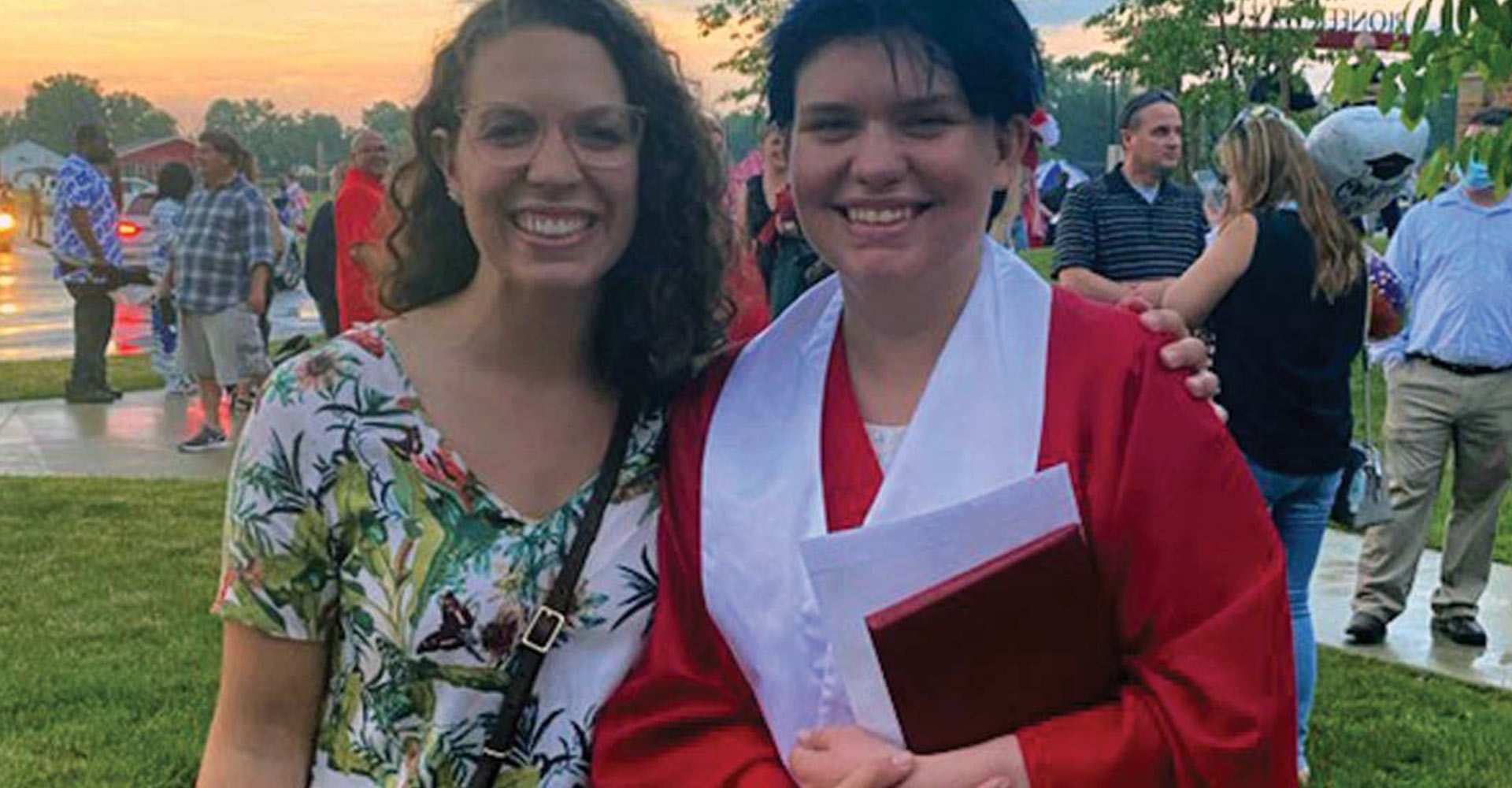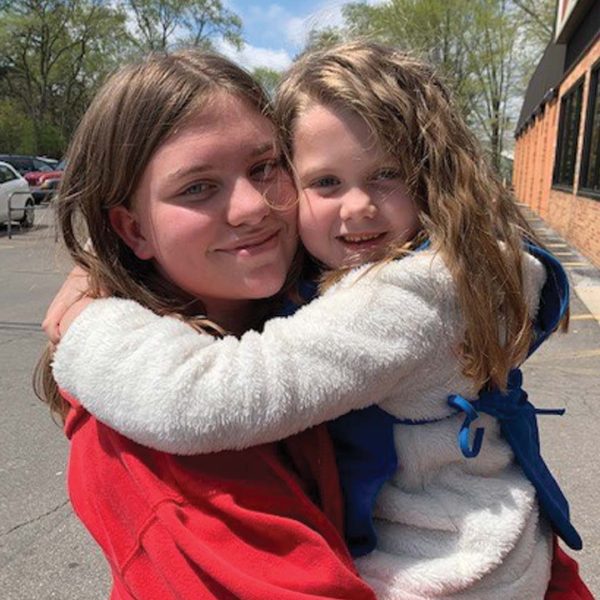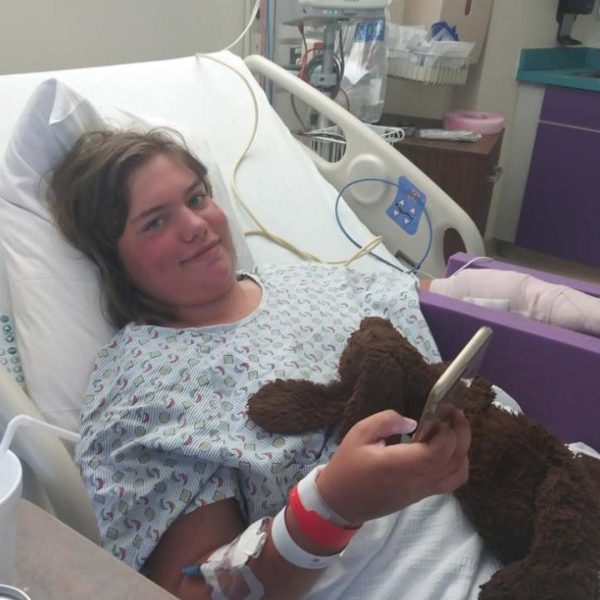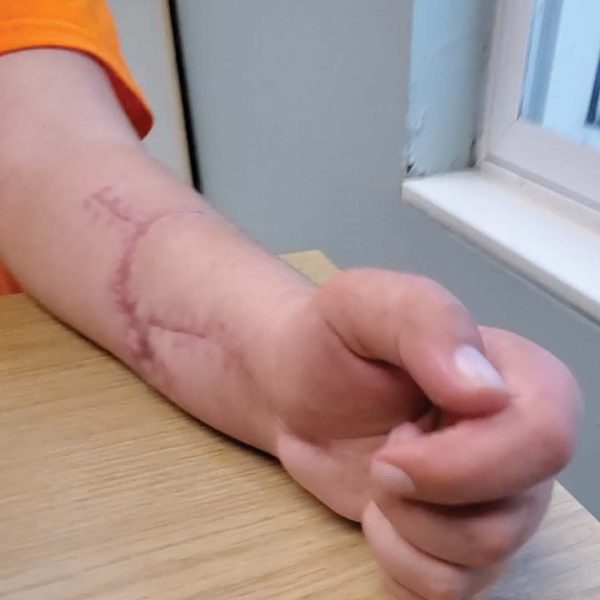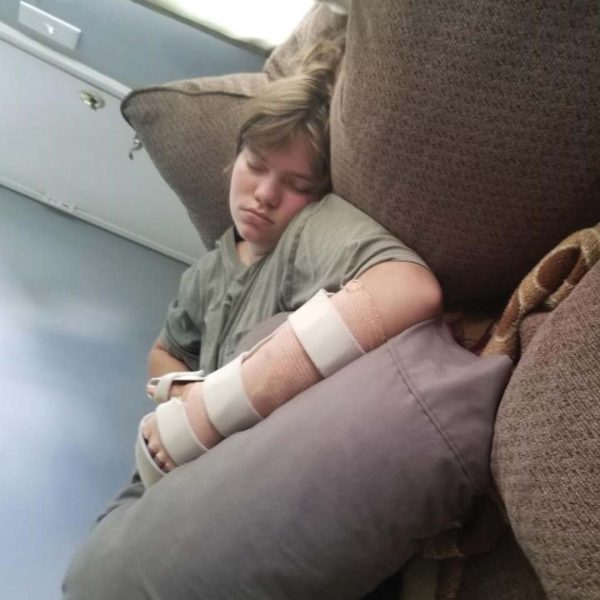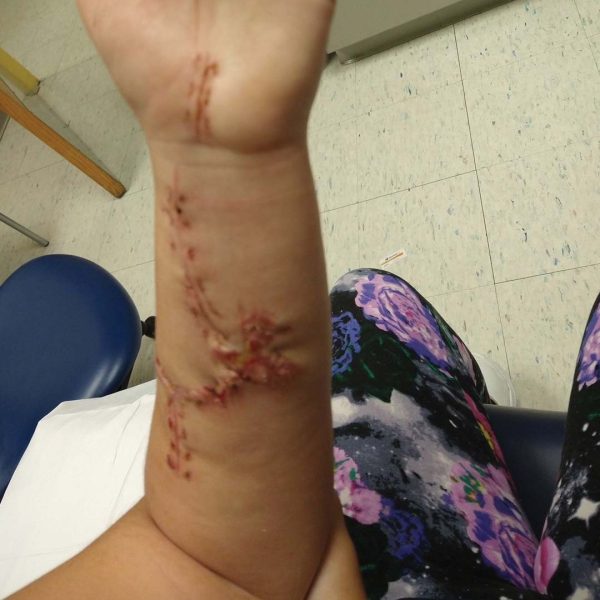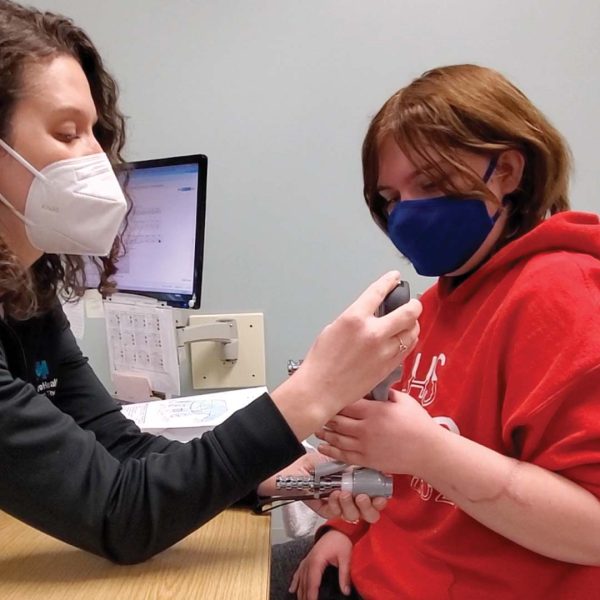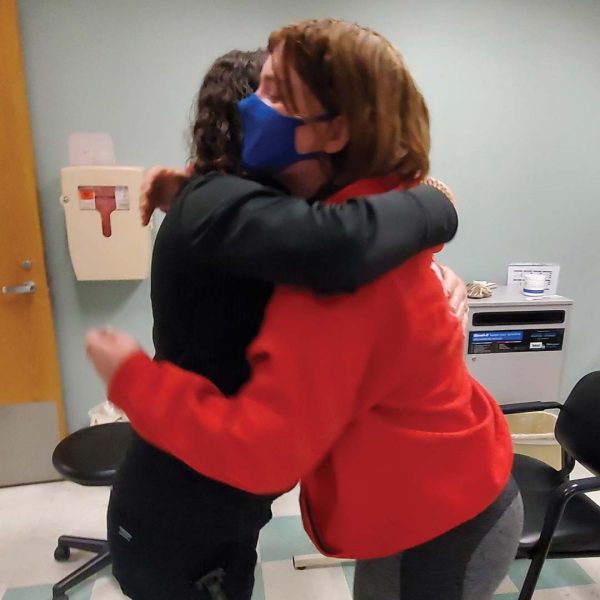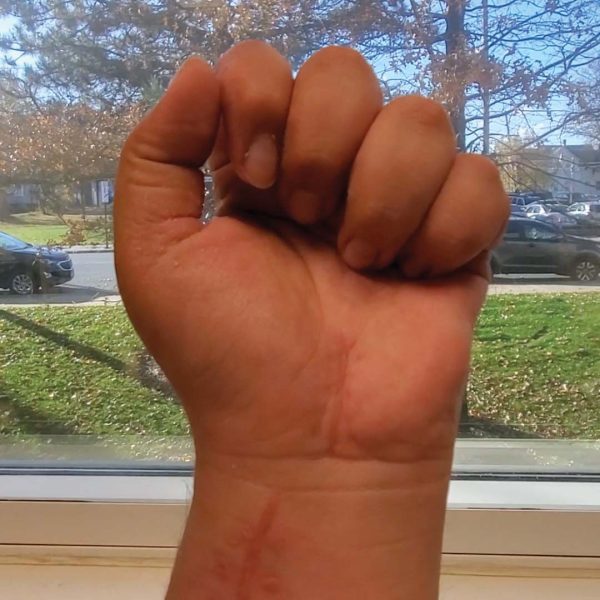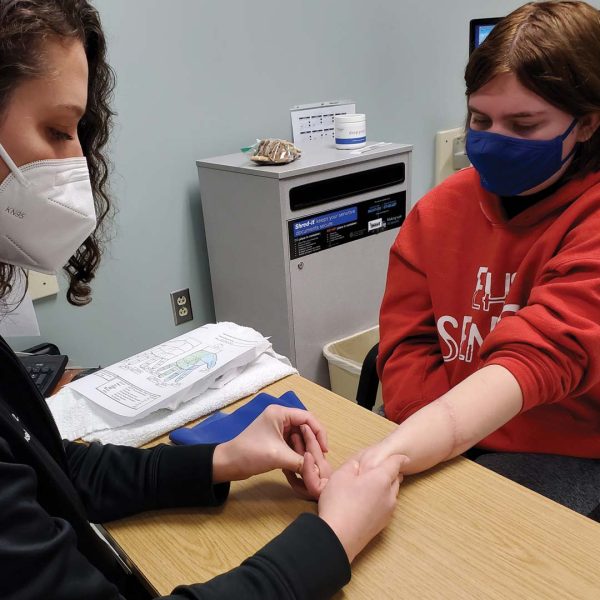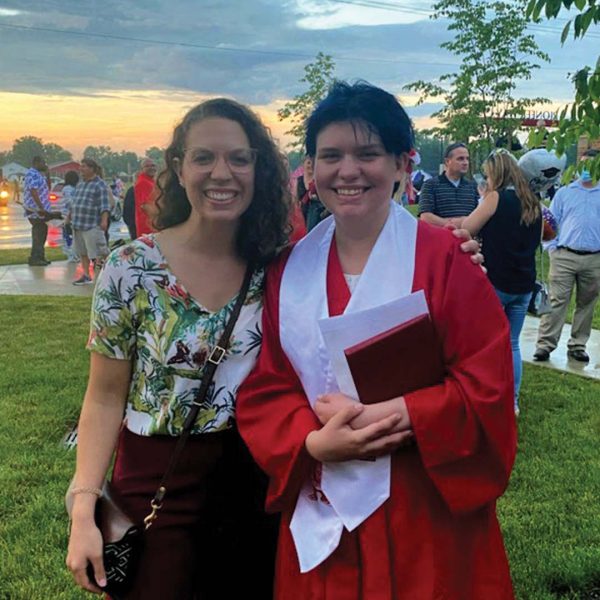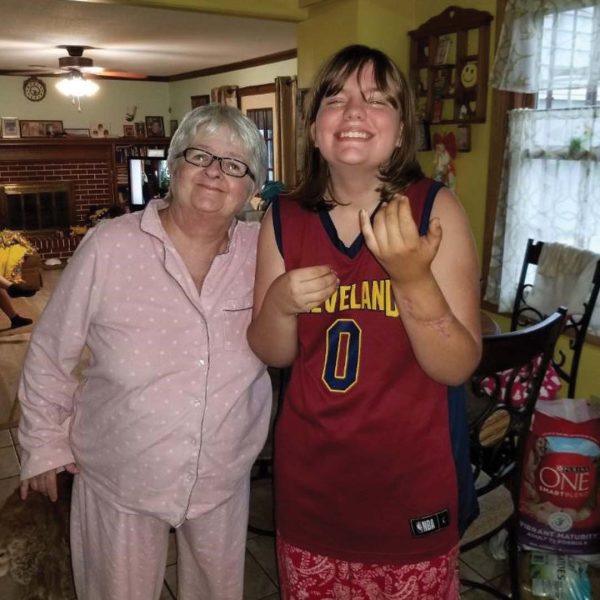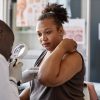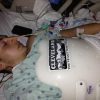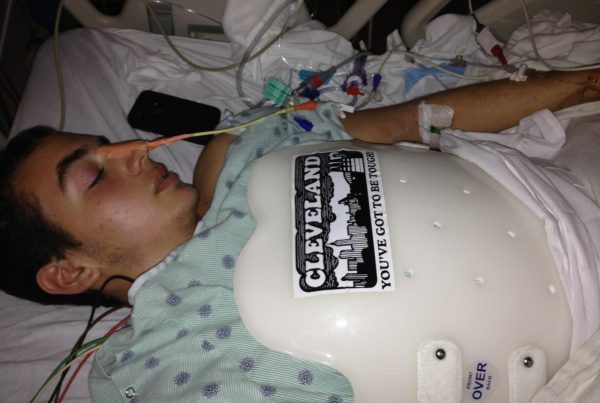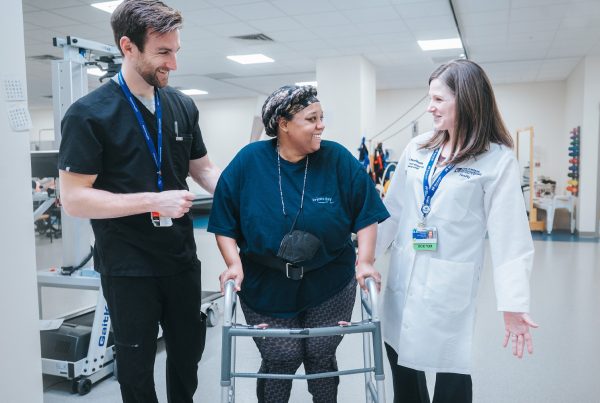Ever since she can remember, Kimberleigh Chitwood has been fascinated by power tools.
“I’ve always liked being able to see what they could do, all the things you can make with a little piece of wood,” the 18-year-old says.
On July 5, 2020, the high school senior was helping her uncle with a job. Kimberleigh was cutting pieces of wood at a 45-degree angle, operating a compound miter saw with her right hand and holding the wood in her left hand.
Unlike the many times she’d used the saw before, she was using it without someone else holding down the piece of wood. And she made a crucial mistake: crossing her left arm in front of her while trying to cut the wood. The wood slipped, pulling her left arm into the saw. The only thing keeping her arm together were three tendons and a nerve.
A neighbor got a towel to make a homemade tourniquet. Her uncle had removed his shirt to tie around her arm as they waited for EMTs to arrive. An ambulance soon brought Kimberleigh to MetroHealth.
Surgeons told her that there was a 90-98 percent chance that they would have to amputate her arm. Thankfully, a MetroHealth surgical team led by Dr. Kyle Chepla performed a 3 ½-hour emergency reconstructive surgery and was able to reattach her forearm. When Kimberleigh woke up, she was able to wiggle her fingers just a little bit.
Kimberleigh decided MetroHealth was where she needed to be for therapy, too. She had a lot of work ahead of her to be able to do everything she could before.
For the first year, occupational therapist Cori Nosin and Kimberleigh met twice a week. Because the power saw had cut nearly all Kimberleigh’s tendons, it made therapy that much more challenging.
“Typically, you treat flexor tendons one way and extensor tendons another way,” Cori explains. “We were balancing both at the same time.”
Two months passed before Kimberleigh could move the fingers on her left hand with a wider range of motion. Her pinky and ring fingers were the least affected; she had no feeling in her thumb or index finger.
“There were times when I got frustrated, when I definitely thought I wouldn’t ever be able to do everything,” Kimberleigh says.
Cori’s patience made all the difference. During exercises like running her fingers through putty, Cori reminded Kimberleigh to work at her own pace. Even though her last therapy session with Cori was in January, she continues to do exercises at home to help strengthen her hand and thumb.
Today, Kimberleigh’s arm is about 90-95% where it was before the accident. She still hasn’t regained full movement of her thumb. Time will tell if she can recover from the nerve damage.
“She is a once-in-a-career patient,” Cori says. “We see a lot of injuries similar to hers. But age is on her side. She’s compliant. She gets it. From her outcome, you would never have known that she was injured.”
Before the accident, Kimberleigh wanted to study architecture or graphic design. Now, she wants to be an occupational therapist so she can make the same kind of impact that Cori has made on her.
“With what happened to me, I think I would be able to relate more to other people,” she says.

